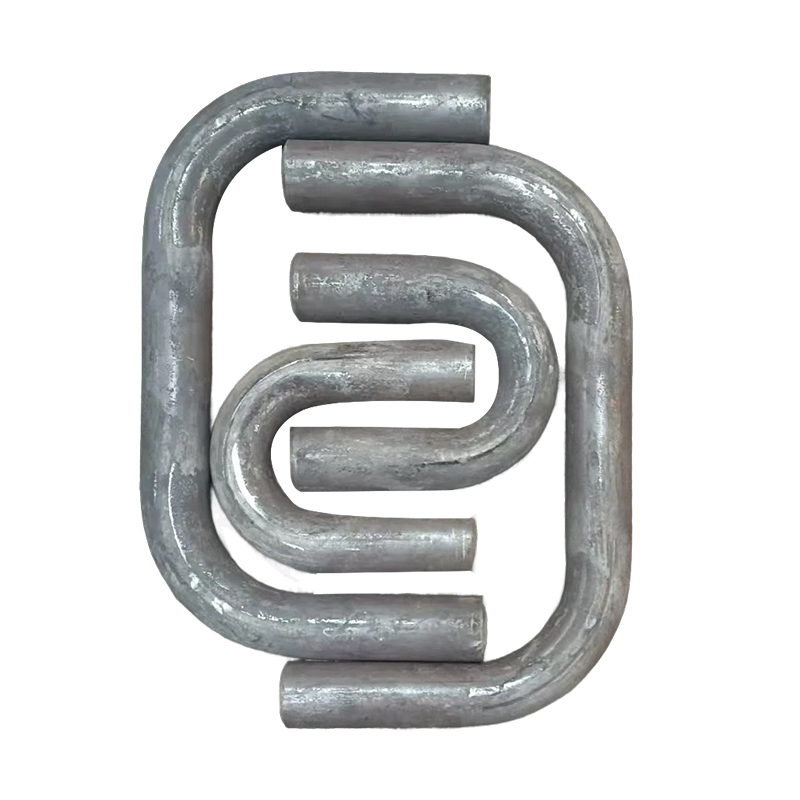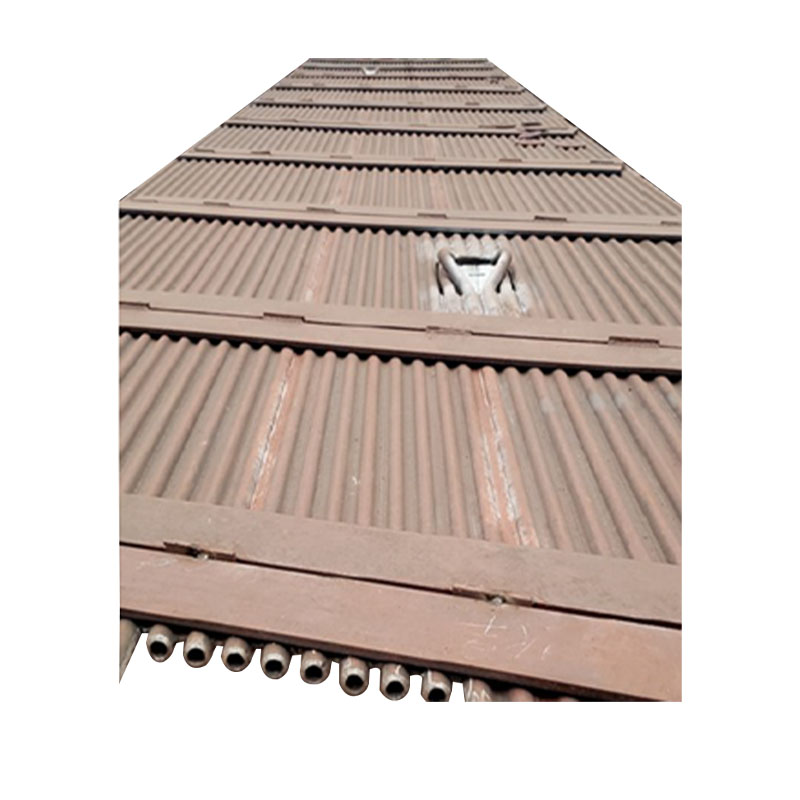How do pipe fittings minimize fluid resistance while maximizing turbulent heat transfer?
Release Time : 2025-11-19
In industrial sectors such as energy, chemical engineering, HVAC, and waste heat recovery, heat exchanger performance directly impacts system energy efficiency and operating costs. As a representative of high-efficiency heat transfer elements, pipe fittings significantly expand the heat transfer area by winding or integrally rolling continuous helical fins onto the outer surface of the base tube. However, traditional fin designs often significantly increase fluid resistance while enhancing heat transfer, leading to increased power consumption in fans or pumps, thus offsetting some energy savings. Pipe fittings achieve a breakthrough in "low-resistance, high-efficiency" heat transfer by precisely generating beneficial turbulence while reducing pressure drop through optimized geometric parameters, flow boundary control, and multi-scale collaborative design.
1. Precise Control of Fin Geometric Parameters: Balancing Area Gain and Flow Disturbances
Key design variables for pipe fittings include fin height, thickness, pitch, and fin density. Research shows that higher and denser fins are not necessarily better. Excessively high fin height can lead to an expanded wake region, forming low-pressure backflow vortices and increasing form drag; conversely, excessively small pitch narrows the channel, drastically increasing frictional resistance. Modern high-performance pipe fittings employ non-uniform pitch or variable-height fin designs: using a sparser pitch in the inlet section to reduce initial pressure drop, and a denser pitch in the mainstream region to enhance turbulence; or gradually reducing the fin height along the flow direction to guide a smooth fluid transition. CFD simulations and experimental verification show that the optimal pitch is typically 1.5–2.5 times the fin height, which can improve the heat transfer coefficient by 40%–80% while keeping the pressure drop increase within 20%.
2. Fin Edge and Surface Microstructure: Inducing Controllable Turbulence
While turbulence can disrupt the thermal boundary layer and enhance heat transfer, disordered strong turbulence can lead to significant energy loss. Pipe fittings actively guide the fluid to generate ordered vortices by setting serrated notches at the leading edge of the fin, using flow-diverting grooves at the trailing edge, or machining microgrooves/pit arrays on the fin surface. These microscale structures promote lateral mixing of hot and cold fluids without significantly increasing mainstream resistance, accelerating heat transfer from the pipe wall to the mainstream. Especially under low Reynolds number conditions, this design can trigger transition earlier, allowing the transition from laminar to turbulent flow to occur sooner, significantly improving heat transfer efficiency at low flow rates.
3. Synergistic Enhancement: Constructing a Three-Dimensional Composite Flow Field
Advanced pipe fittings not only focus on the shell-side fluid but also simultaneously optimize the flow inside the pipe. For example, adding helical ribs or internal fins to the inner wall of the base pipe creates rotating flow fields both inside and outside the pipe; when these two are phase-matched, a synergistic enhancement effect can be produced. When the inner and outer helical directions are opposite, overall torque can be suppressed, improving structural stability. Furthermore, using elliptical or flat pipes instead of circular pipes as the base pipe can further reduce windward resistance while increasing the effective heat transfer projection area. This "internal and external linkage, morphological coupling" design concept improves overall heat transfer performance while reducing system pump power requirements.
4. Material and Manufacturing Process Support: Ensuring Design Implementation
The above optimizations rely on high-precision manufacturing. Pipe fittings commonly employ high-frequency welding, integral rolling, or laser cladding processes to ensure a metallurgical bond between the fins and the base tube, resulting in extremely low thermal resistance. Fin profile tolerances are controlled within ±0.1mm to avoid localized flow dead zones. Simultaneously, high thermal conductivity stainless steel, copper alloys, or aluminum are selected to ensure efficient heat transfer while maintaining lightweight construction. Some high-end products also incorporate anti-corrosion coatings or hydrophilic/hydrophobic surface treatments to adapt to different media environments and extend service life.
The path to "low resistance and high efficiency" in pipe fittings is essentially a masterful application of fluid mechanics and heat transfer. It no longer blindly pursues the largest heat exchange area but instead finds the optimal balance between resistance and heat transfer through geometric intelligence, flow control, and system integration. This design philosophy of "overcoming force with ingenuity" not only improves the performance of individual heat exchangers but also drives a leap in energy efficiency across the entire industrial system—achieving greater heat transfer with less energy consumption, truly realizing the goal of green, low-carbon, and sustainable development.
1. Precise Control of Fin Geometric Parameters: Balancing Area Gain and Flow Disturbances
Key design variables for pipe fittings include fin height, thickness, pitch, and fin density. Research shows that higher and denser fins are not necessarily better. Excessively high fin height can lead to an expanded wake region, forming low-pressure backflow vortices and increasing form drag; conversely, excessively small pitch narrows the channel, drastically increasing frictional resistance. Modern high-performance pipe fittings employ non-uniform pitch or variable-height fin designs: using a sparser pitch in the inlet section to reduce initial pressure drop, and a denser pitch in the mainstream region to enhance turbulence; or gradually reducing the fin height along the flow direction to guide a smooth fluid transition. CFD simulations and experimental verification show that the optimal pitch is typically 1.5–2.5 times the fin height, which can improve the heat transfer coefficient by 40%–80% while keeping the pressure drop increase within 20%.
2. Fin Edge and Surface Microstructure: Inducing Controllable Turbulence
While turbulence can disrupt the thermal boundary layer and enhance heat transfer, disordered strong turbulence can lead to significant energy loss. Pipe fittings actively guide the fluid to generate ordered vortices by setting serrated notches at the leading edge of the fin, using flow-diverting grooves at the trailing edge, or machining microgrooves/pit arrays on the fin surface. These microscale structures promote lateral mixing of hot and cold fluids without significantly increasing mainstream resistance, accelerating heat transfer from the pipe wall to the mainstream. Especially under low Reynolds number conditions, this design can trigger transition earlier, allowing the transition from laminar to turbulent flow to occur sooner, significantly improving heat transfer efficiency at low flow rates.
3. Synergistic Enhancement: Constructing a Three-Dimensional Composite Flow Field
Advanced pipe fittings not only focus on the shell-side fluid but also simultaneously optimize the flow inside the pipe. For example, adding helical ribs or internal fins to the inner wall of the base pipe creates rotating flow fields both inside and outside the pipe; when these two are phase-matched, a synergistic enhancement effect can be produced. When the inner and outer helical directions are opposite, overall torque can be suppressed, improving structural stability. Furthermore, using elliptical or flat pipes instead of circular pipes as the base pipe can further reduce windward resistance while increasing the effective heat transfer projection area. This "internal and external linkage, morphological coupling" design concept improves overall heat transfer performance while reducing system pump power requirements.
4. Material and Manufacturing Process Support: Ensuring Design Implementation
The above optimizations rely on high-precision manufacturing. Pipe fittings commonly employ high-frequency welding, integral rolling, or laser cladding processes to ensure a metallurgical bond between the fins and the base tube, resulting in extremely low thermal resistance. Fin profile tolerances are controlled within ±0.1mm to avoid localized flow dead zones. Simultaneously, high thermal conductivity stainless steel, copper alloys, or aluminum are selected to ensure efficient heat transfer while maintaining lightweight construction. Some high-end products also incorporate anti-corrosion coatings or hydrophilic/hydrophobic surface treatments to adapt to different media environments and extend service life.
The path to "low resistance and high efficiency" in pipe fittings is essentially a masterful application of fluid mechanics and heat transfer. It no longer blindly pursues the largest heat exchange area but instead finds the optimal balance between resistance and heat transfer through geometric intelligence, flow control, and system integration. This design philosophy of "overcoming force with ingenuity" not only improves the performance of individual heat exchangers but also drives a leap in energy efficiency across the entire industrial system—achieving greater heat transfer with less energy consumption, truly realizing the goal of green, low-carbon, and sustainable development.







